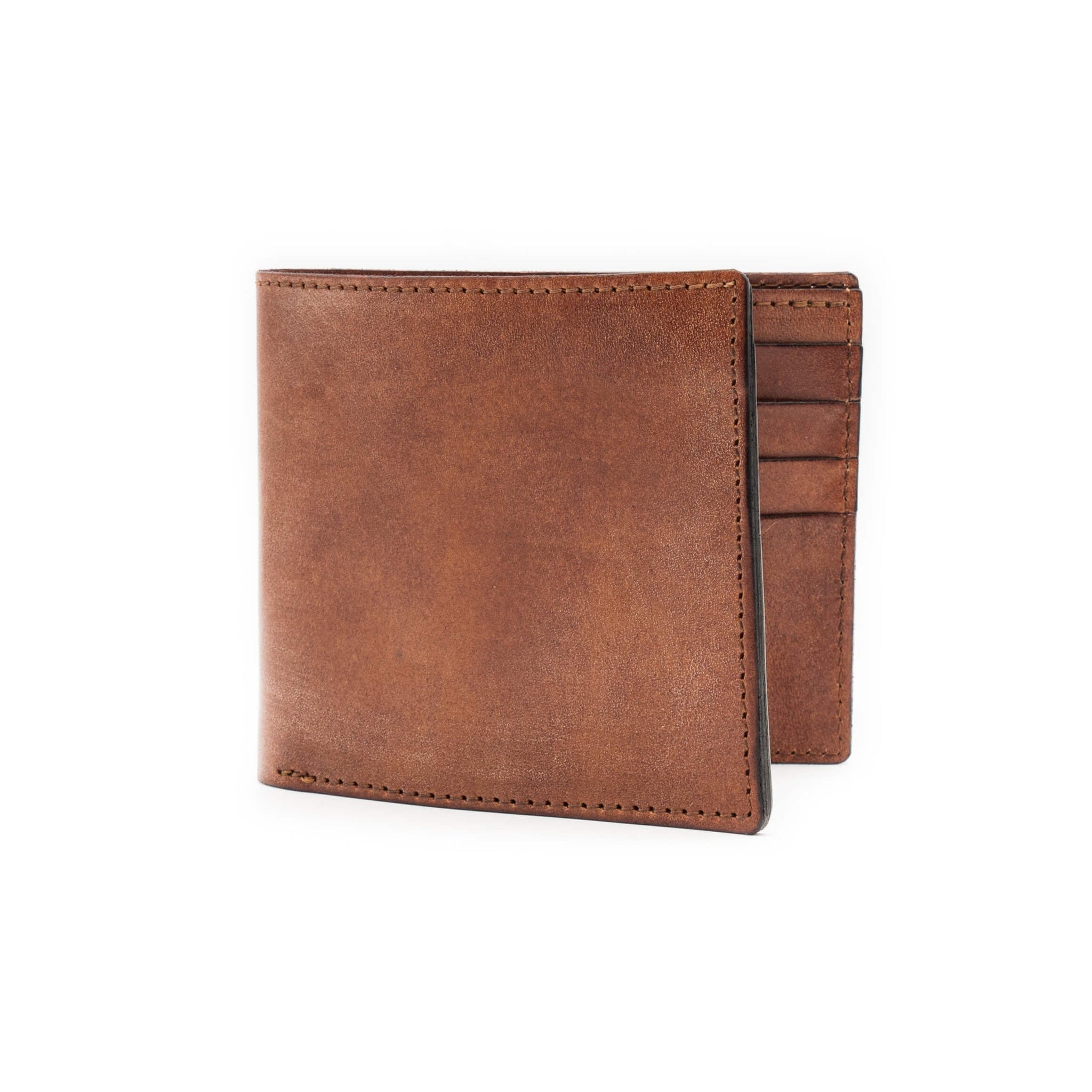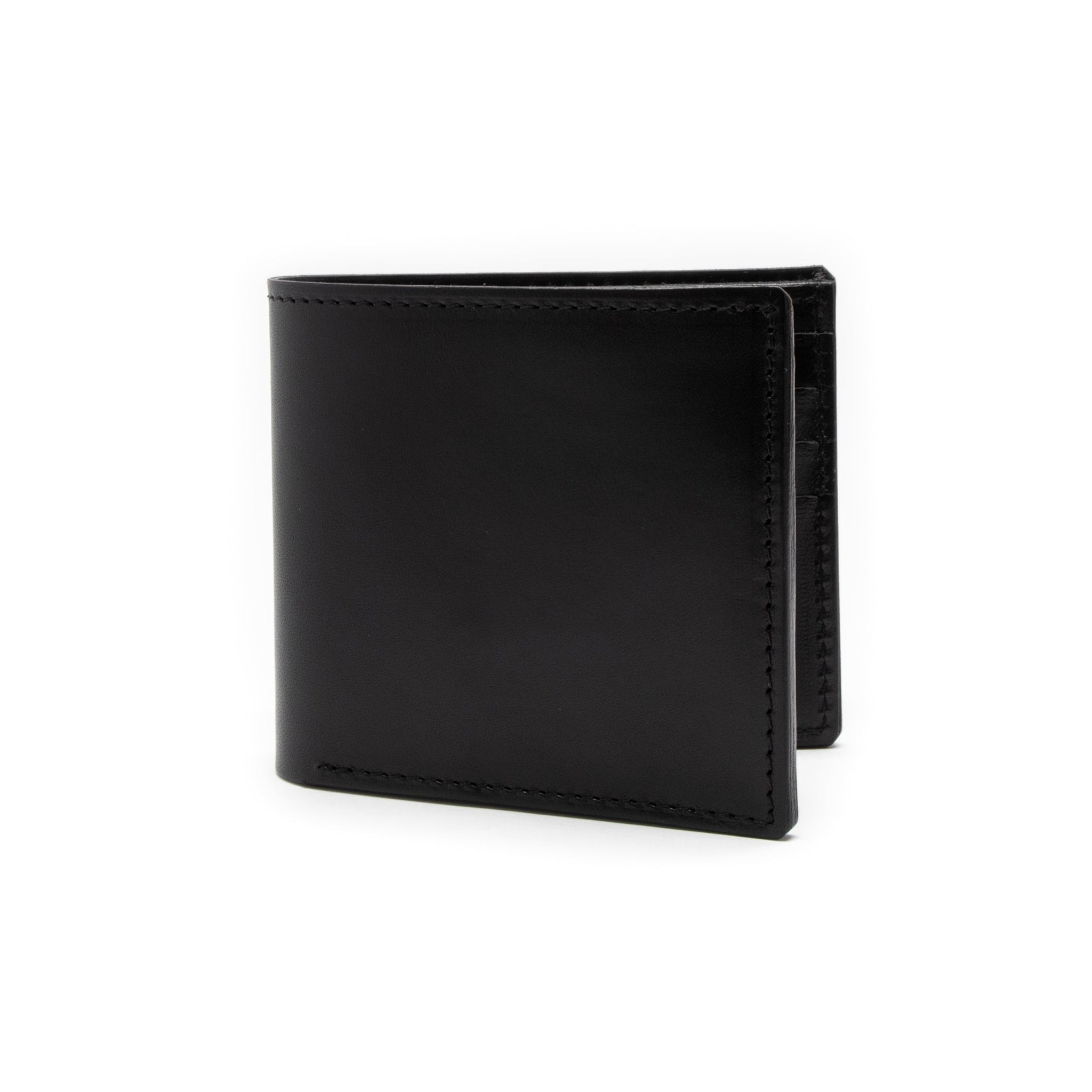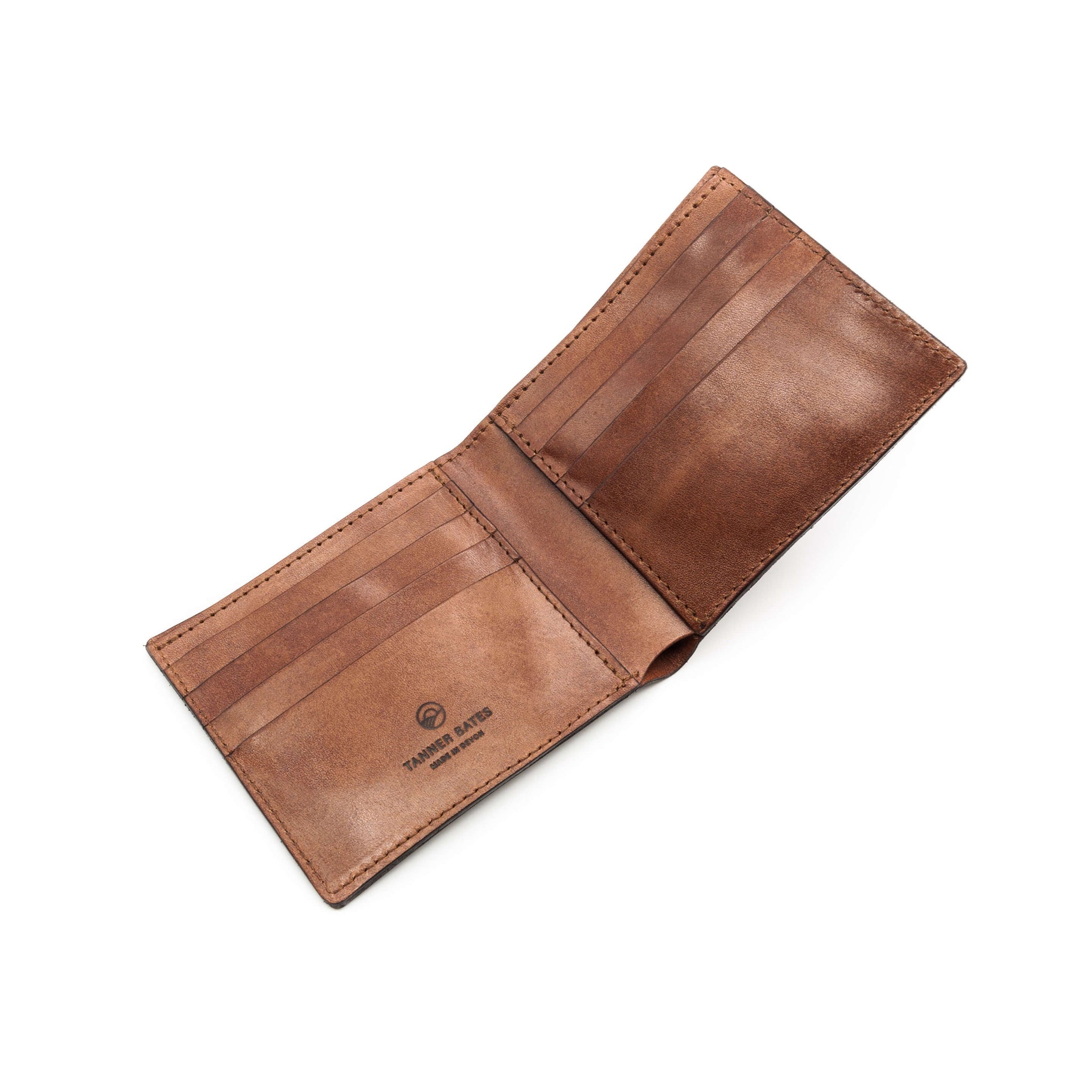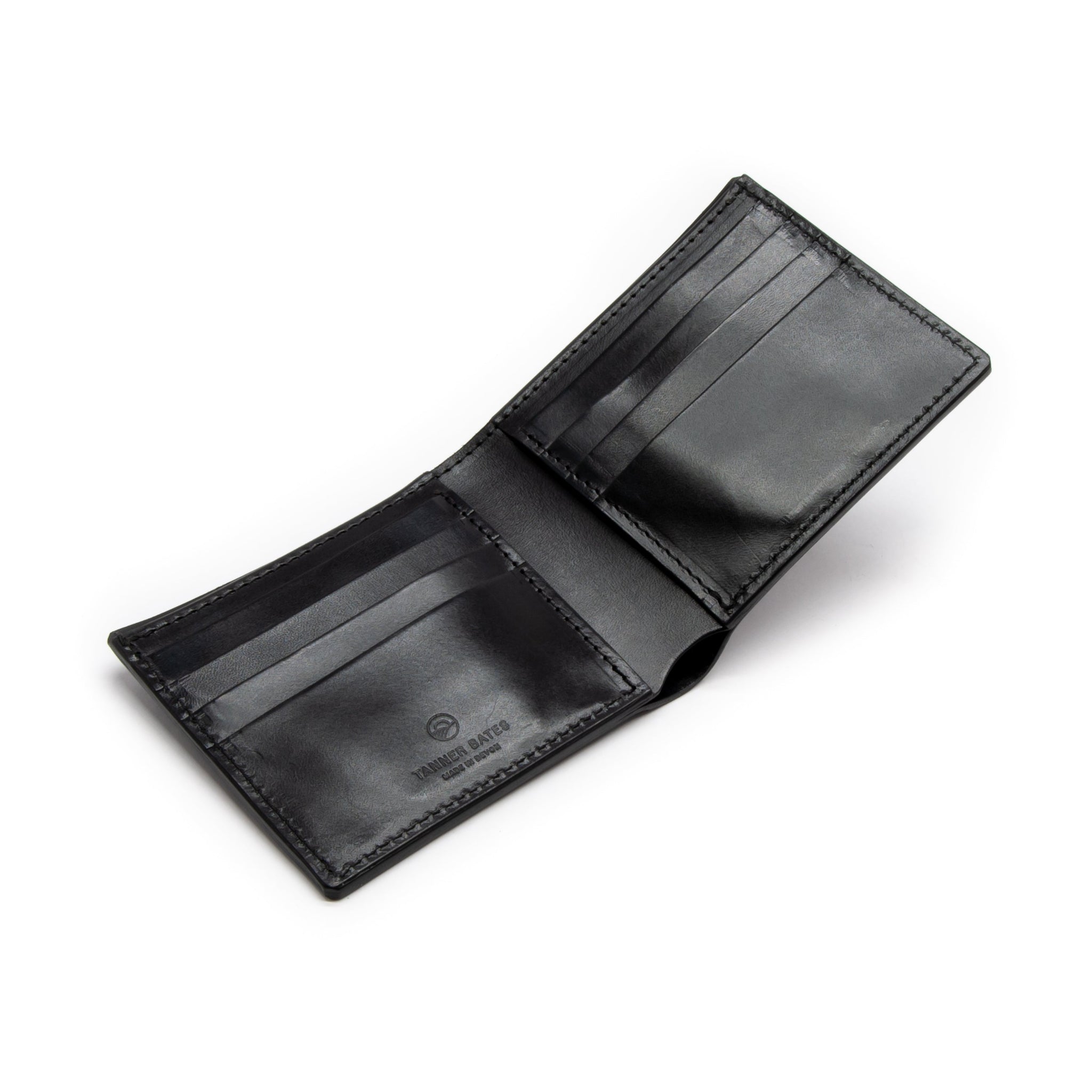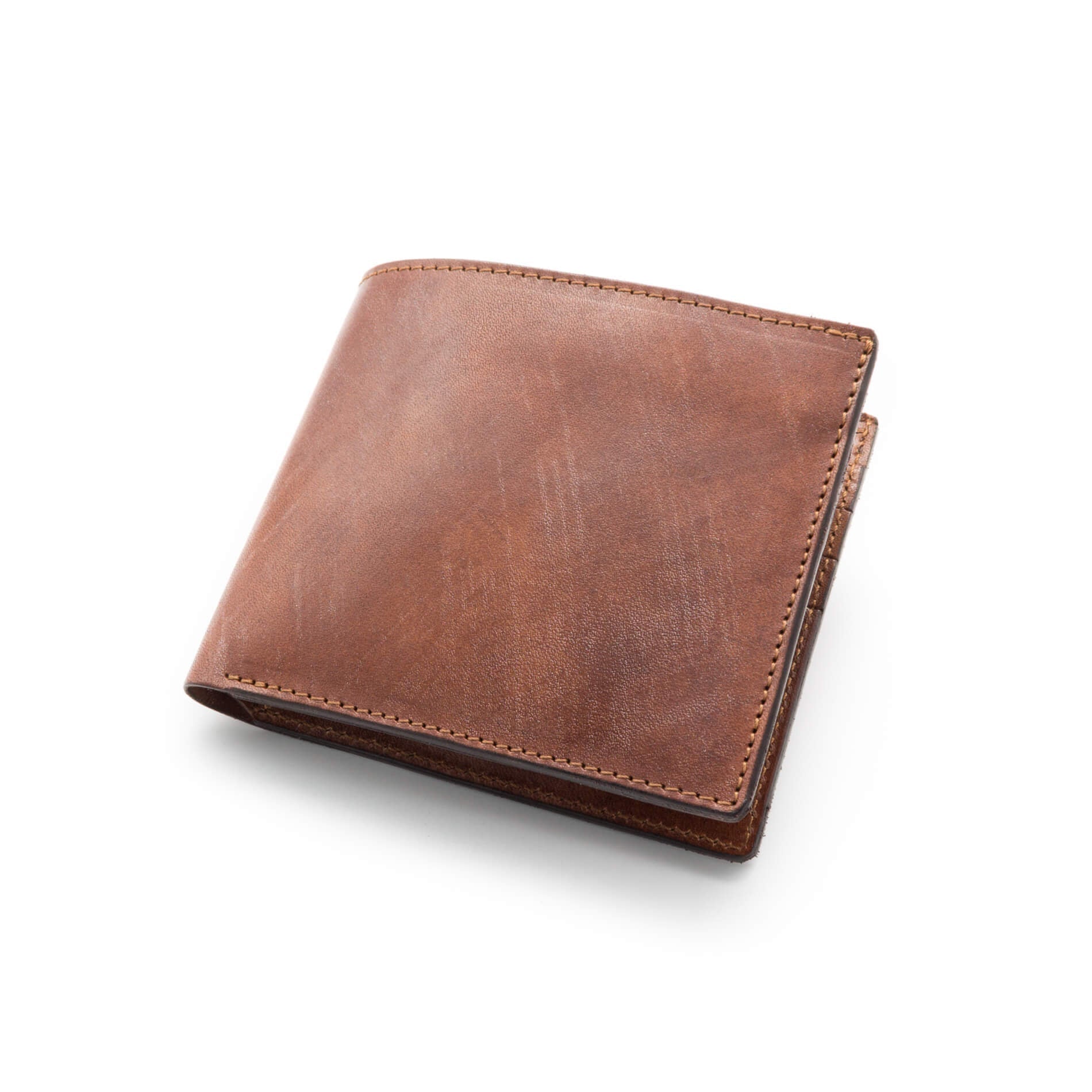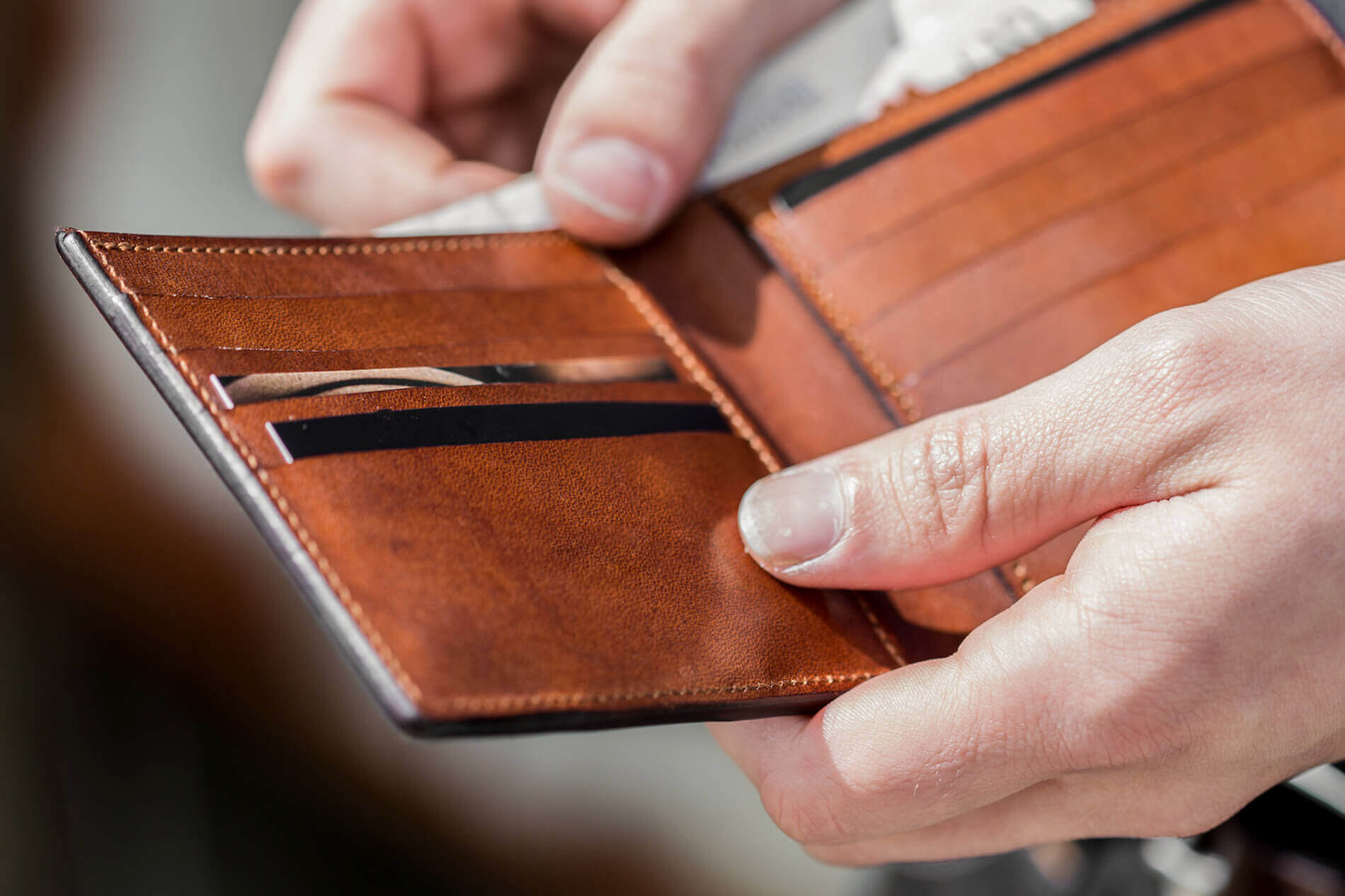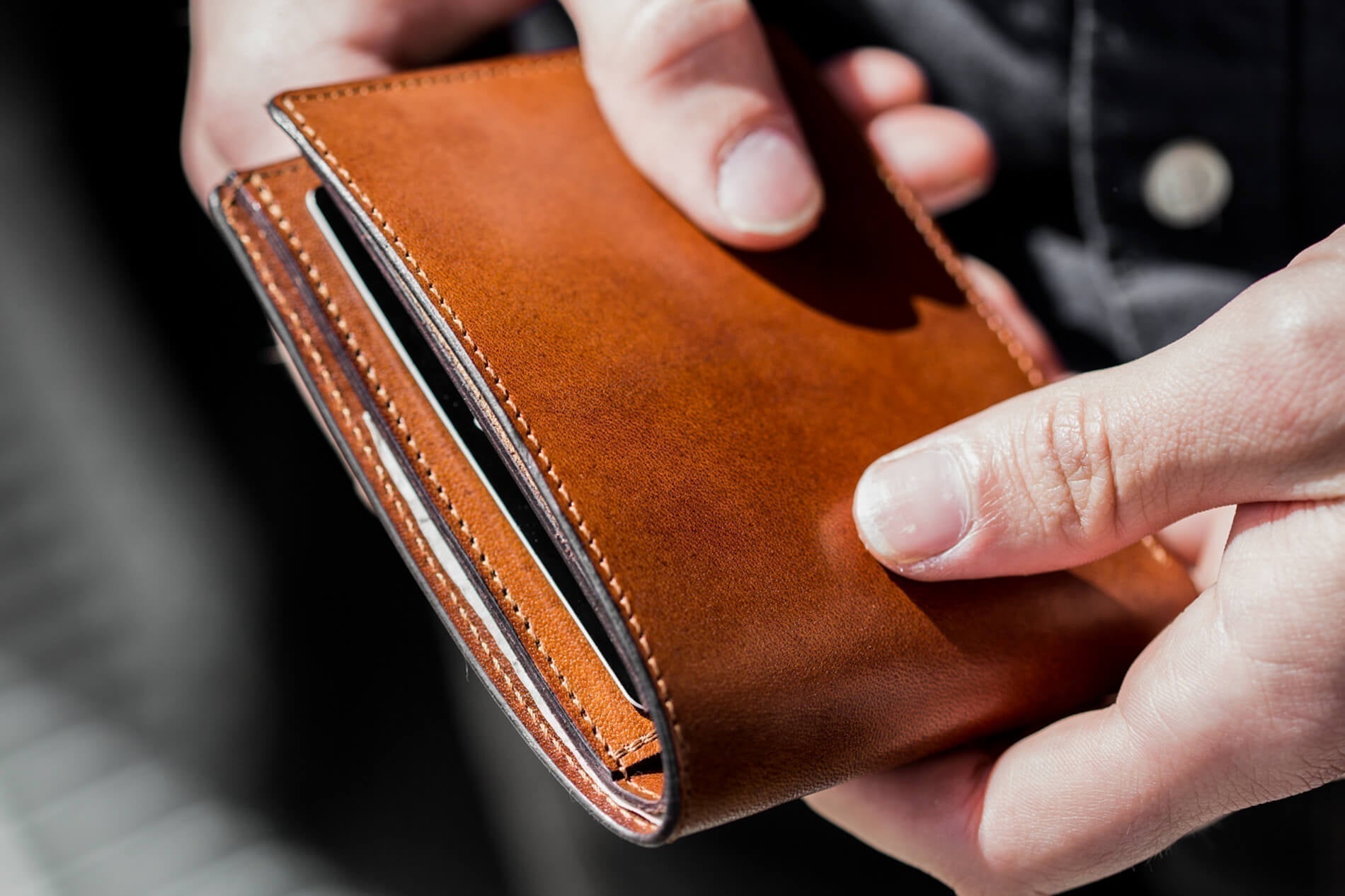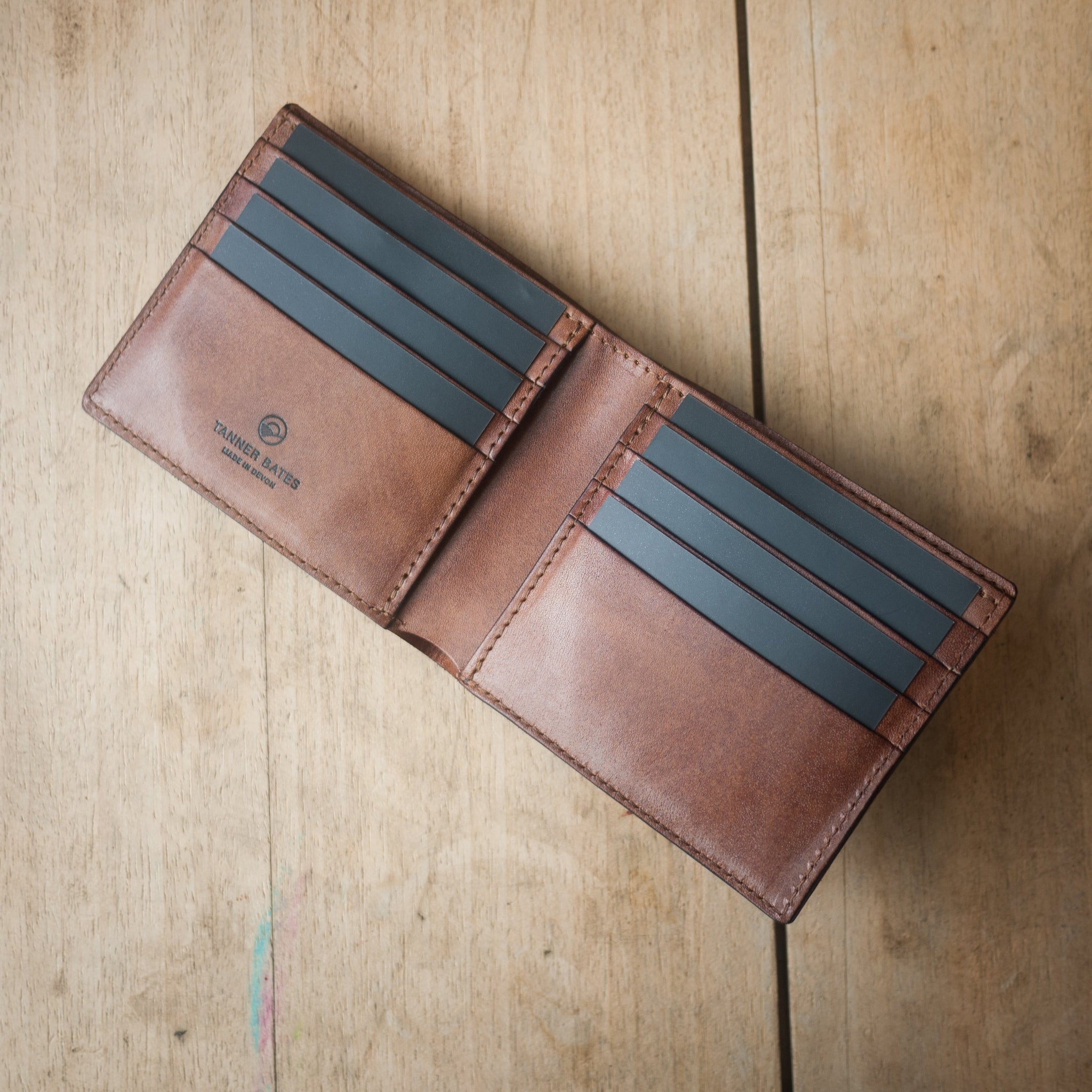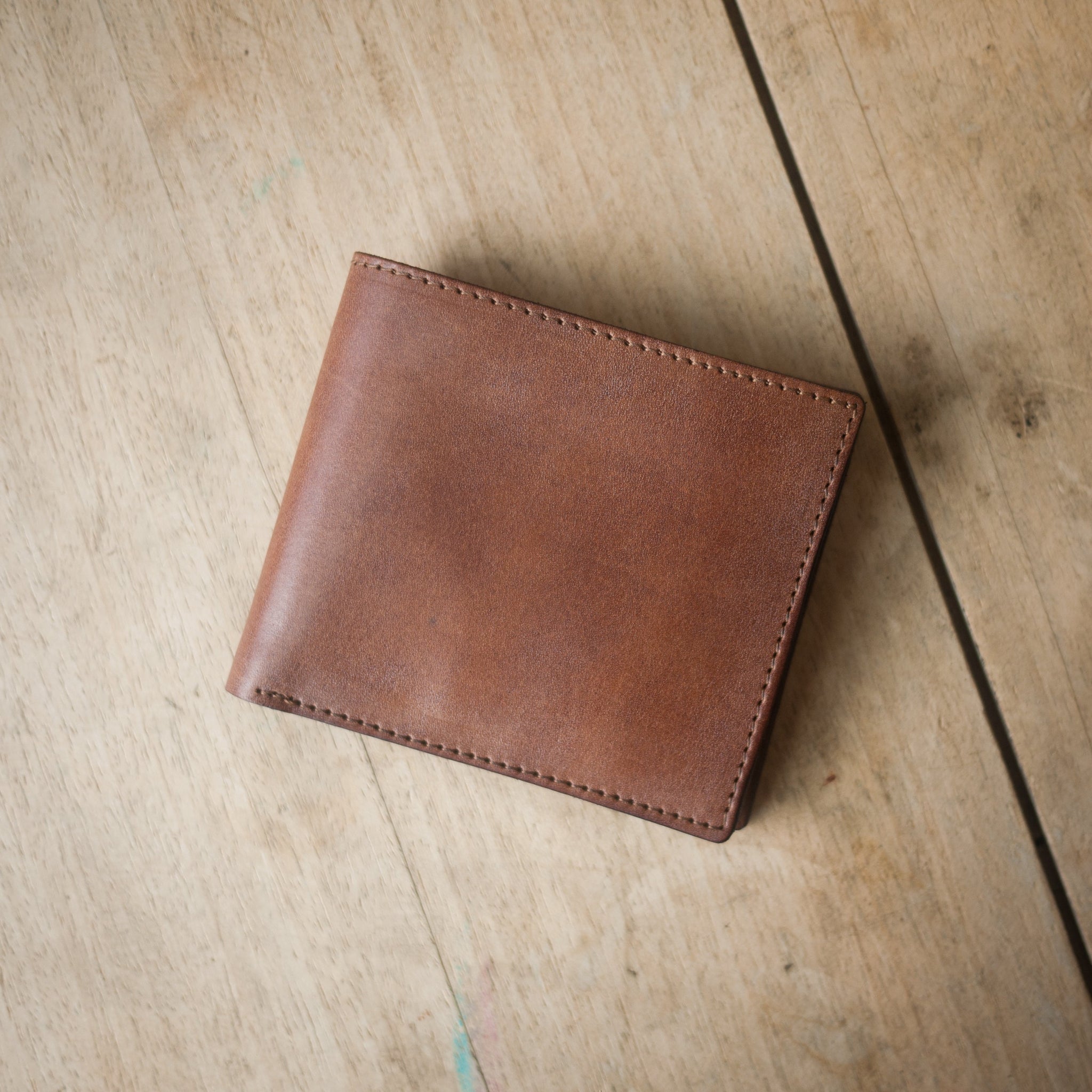The Leather
The leather is full grain, tanned with oak bark from the Lake District and dyed by hand. Most tanneries produce what they call "corrected grain leather" a buffing process that removes the very top layer so the leather surface has a uniform appearance across the hide. We all know that leather, a natural animal hide is anything but uniform and we like to champion that sometimes featuring the natural irregularities in our products. The leather arrives from the tannery 5mm thick. We reduce it to around 1mm to make the Cut Edge Billfold. Most wallets have a turned edge so you cant see the true edge. We build leather goods to last and feel that turned edges are just too thin to be durable.
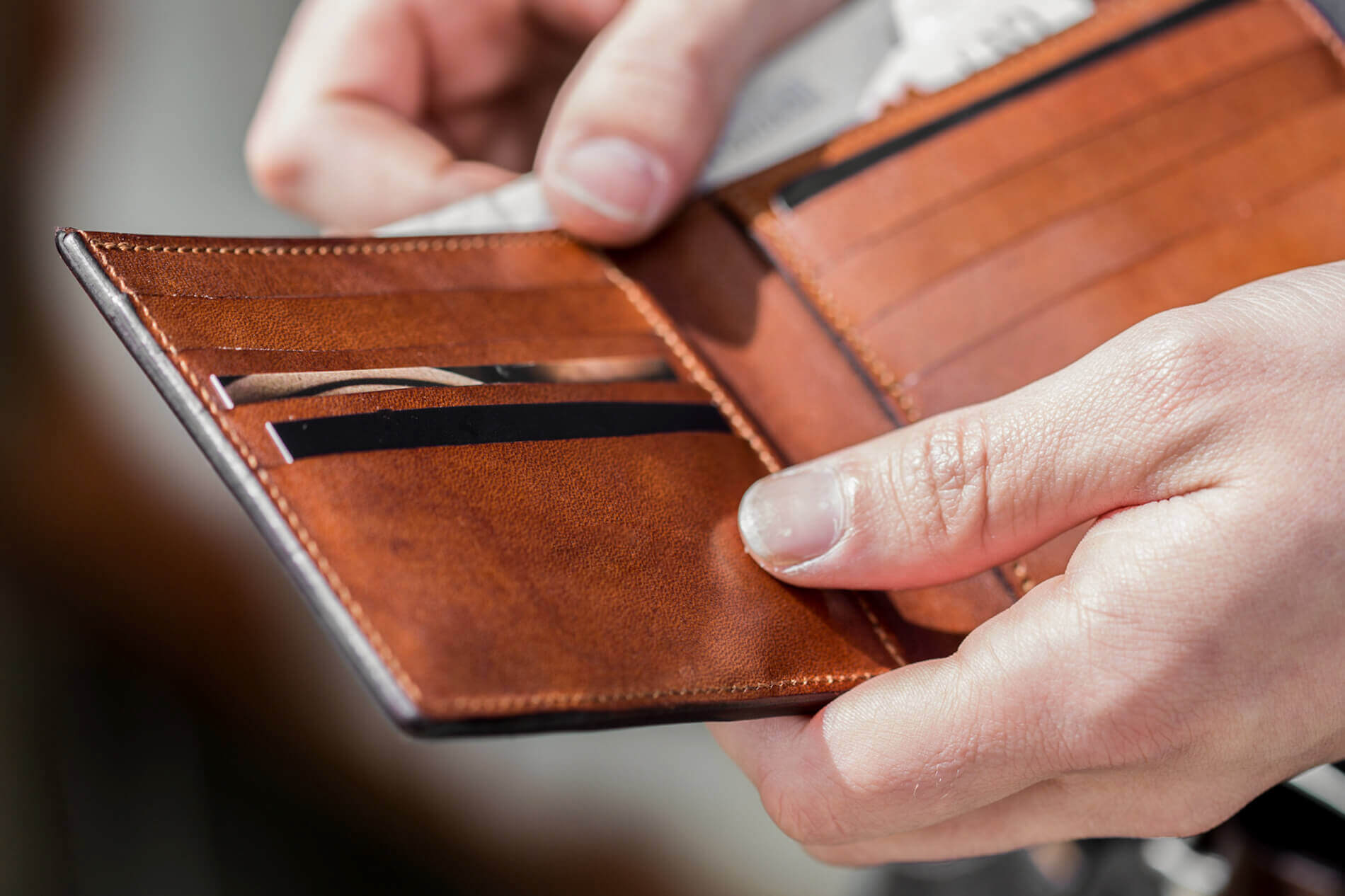
Oak bark tanned leather produces superb edges so we prefer to expose them. Edges of lesser quality leather are not worthy of being exposed so have to be covered by a turning technique. Perfecting edges is probably the most time consuming procedure in making leather goods. There are no short cuts - we sand with finer and finer emery cloth down to 1200 grit to get a perfectly smooth burnished finish.
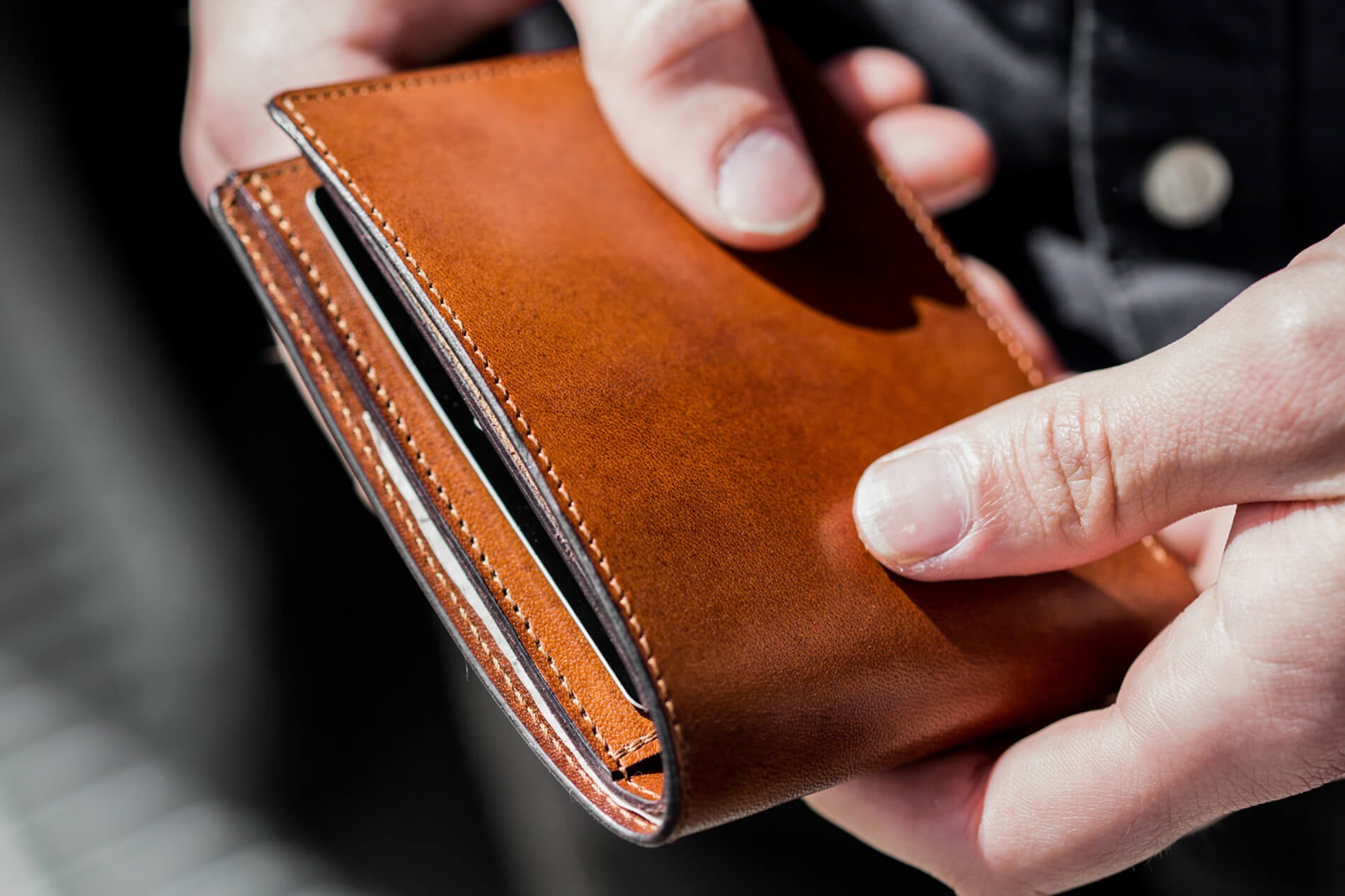
A billfold wallet, a compact holder for banknotes and cards, has been a staple accessory in men's wardrobes for centuries. In the following we offer in-depth insight into the reasons behind choosing a cut edge leather billfold wallet and the aspects that set it apart from other wallets in the market.
A Peek into the Wallet's History
In the 19th century, men tended to carry wallets fastened to their belts as it was considered inelegant to keep them in pockets. Interestingly, in regions like Spain, wallets were more of a carrying case for smokers, housing their flint, steel, rolling papers, and 'yesca' for igniting their rudimentary cigarettes.
Fast forward to the present day, wallets have become an everyday accessory for both men and women, primarily used to carry currency, credit cards, and identification. The compact, pocket-sized wallets that we use today were rolled out in the early 1950s, coinciding with the advent of the first credit cards.
Understanding Leather Grades
However, discerning between these superior grades and lower-quality ones such as genuine or bonded leather, can be tricky, as many manufacturers are adept at making the latter appear more luxurious than they are.
Full-grain leather, hailed as the highest quality leather, is characterised by its untouched, pristine condition. This type of leather is neither sanded nor buffed, ensuring that the fibres are not compromised, which in turn contributes to its immense durability.
Top-grain leather, on the other hand, is sanded to remove any 'imperfections' in the hide like scars or natural creases. While it is a durable option, it lacks the natural tonal variations and the ability to develop a rich patina over time, characteristics intrinsic to full-grain leather.
The Deception of 'Genuine Leather
A common pitfall for many buyers is the misleading term 'genuine leather'. Contrary to what the term implies, 'genuine leather' does not denote authenticity or superior quality. Rather, it refers to the lower layer of the hide, which is of a coarser quality.
The deceptive name aside, 'genuine leather' is weaker due to its coarse grain and linear fibre arrangement. Typically, it is coated and stamped with a faux grain to enhance its aesthetic appeal. However, if durability is what you seek in a wallet, it's best to avoid this type of leather.
The Fallacy of Bonded Leather
The Promise of Full Grain Leather
However, it's worth noting that even full grain leathers are not immune to quality compromises, with some tanneries prioritising profits over quality. Therefore, it's crucial to evaluate a wallet based on multiple factors, not just the type of leather it is made from.
Cut Edge vs Turned Edge Wallets
Cut-edge wallets, where the raw edge of the leather is exposed, are sometimes coated with a resin for a more ‘finished’ look. However these edge paints are never as durable as a burnished edge. Some critics argue that cut edges affect longevity, but many durable leather products using the cut edge method have proven this theory wrong. At Tanner Bates, we burnish our cut edges as this is the most durable and in our opinion, the most aesthetically pleasing method of finishing a cut edge. This method is only possible when using the finest quality vegetable tanned leather.
In contrast, turned edge wallets have a folded leather edge, creating a different aesthetic. However, turned-edge wallets are time-consuming to construct and hence, more expensive if hand made. This process is better suited to a more automated/factory production, is less durable and tends to be more applicable to a product made from chrome tanned leather as chrome tanned leather cannot be burnished in the way that vegetable tanned leather can.
The Role of Stitching in Wallet Durability
The Importance of Pocket Design
A cut-edge leather billfold wallet is a fine blend of craftsmanship, heritage, and quality. Its unique features, such as the cut edge design, full-grain leather construction, and meticulous stitching, contribute to its durability and aesthetic appeal. Investing in such a wallet is a testament to one's appreciation for authenticity, tradition, and enduring value.

